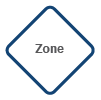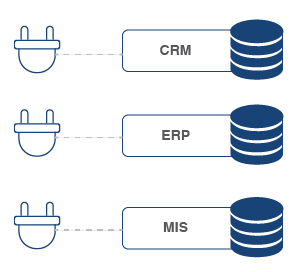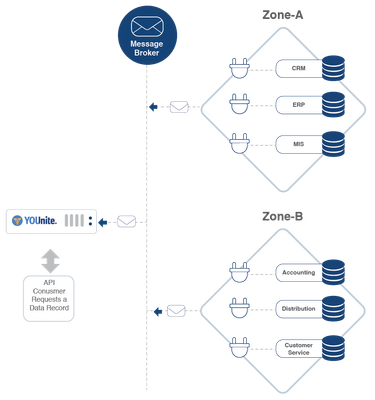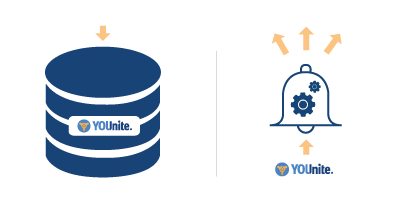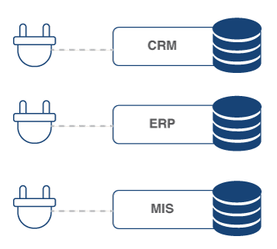An Introduction to YOUnite
If you are new to MDM you will need to be familiar with the concepts on the page What is Master Data Management (MDM)?.
YOUnite is a robust, configurable, federated data-integration system with master data capabilities. YOUnite allows an organization to gently transition to the goal of MDM without forcing it into an "all-or-nothing" approach. It provides tools that allow the organization to:
- Describe data models
- Group applications/services into organizational boundaries
- Manage access control to the data (governance)
- Decide which applications/services contain master data
- Integrate and transform data between applications/services
YOUnite includes a user-facing tool, YOUnite UI, that provides:
- An administrative interface for managing the YOUnite ecosystem.
- A Data Steward interface for managing Governance and Master Data.
With YOUnite you can create zones to group the resources for a given entity. A single zone refers to a collection of systems/applications owned by groups inside of an organizations. Zones are defined within MDM by the MDM Administrator for each zone. They act as a boundary for which permissions and governance may be defined so that an one group in an organization can control data flowing in and out between other groups. For example, an educational institution may have a college district office responsible for many colleges within the district. You can create a "parent zone" for the college district office for accessing data across all of its district colleges. Each college within that district could then be grouped into a "child zone," with YOUnite securing and controlling data flow into and out of each. Read more on zones below.
YOUnite addresses the issue of "What is the record of truth?" for a resource in any given context. That source of truth is called master data. The resource might be a customer, a product order, a college, a course, etc. MDM provides multiple points for updating these resources. It also ensures that the master data record is always updated while allowing each zone to determine where those updates are applied. For example, if a student updates their address in the college application system, YOUnite receives this change and consults the college zone's Adaptor Capabilities Lists then determine if the updated address is applied to the Student Information System (SIS), Learning Management Systems (LMS), or any other application that stores the student's address. Adaptor Capabilities Lists consist of the capabilities an adaptor declares to the YOUnite Data Hub upon initialization that 1) link records in the underlying application/service to YOUnite data records, 2) POST entries in the underlying application/service that link to YOUnite data records, and 3) manipulate data in the underlying service.
Layer 3 - API Access, Data Access, and Notifications
Users and applications can make requests and gain data access through the YOUnite API. YOUnite becomes an operation data store when accessing data records through the API.
Note: The YOUnite API is a RESTful application programming interface that allows developers to access administrative resources and view/modify data records under control of the YOUnite Data Hub. The API should be used for any business logic while the message bus is used for keeping data synchronized.
Notifications allow events to be generated and delivered to legacy applications to trigger business logic. If, for example, an employee is promoted, and the HR system updates the employee's record, the adaptor attached to the HR system can detect the change and pass it on to YOUnite where it can then notify other systems that have registered interest in employee status changes.
Layer 2 - Data Governance
Data governance defines what data a zone chooses to share and receive (inbound, outbound, and operational ACLs) with other zones and adaptors. For example, the HR Zone may choose to restrict changes it receives (inbound) from a system that is part of the Manufacturing zone. Or, the HR Zone may restrict changes it receives from an entire zone representing a company spin-off subsidiary and all its systems. Or, the HR zone may apply governance ACLs on its own system, preventing personal information from being shared outside of the system (outbound).
Layer 1 - Data Synchronization
The adaptor makes the connections between YOUnite and the legacy systems in the organization's ecosystems. Adaptors extract, transform, and load data into and out of the legacy systems. Business logic is generally not part of an adaptor.


